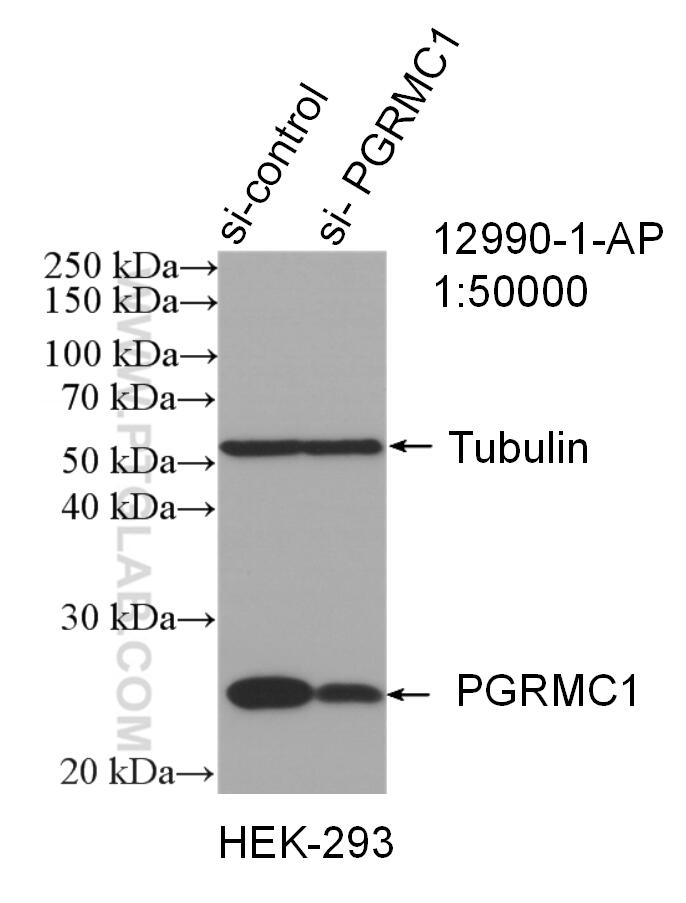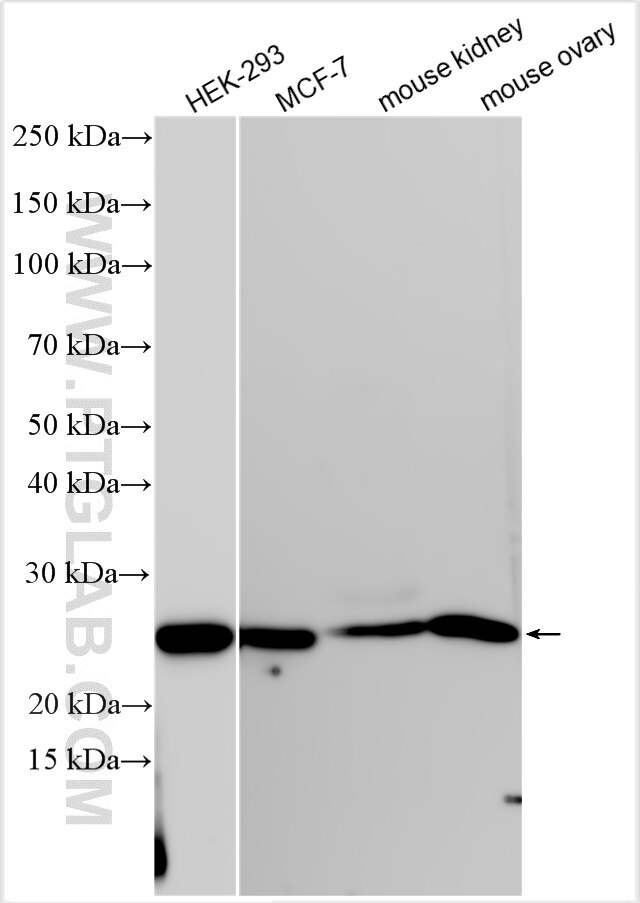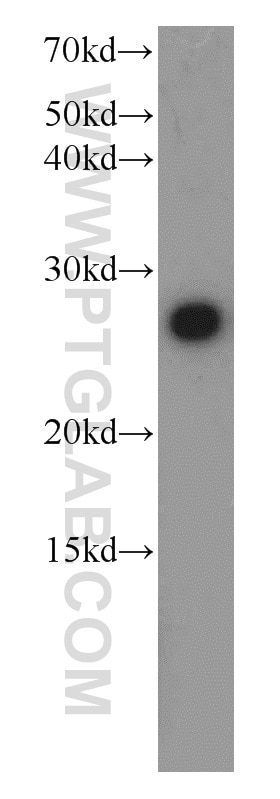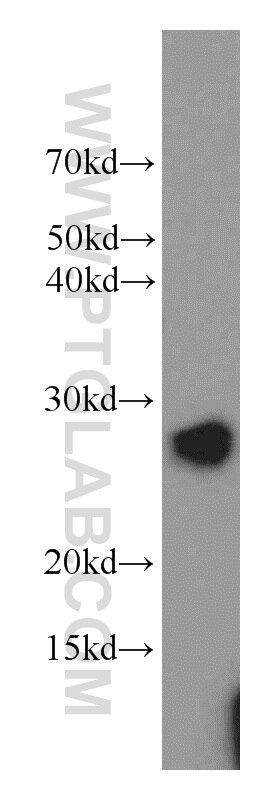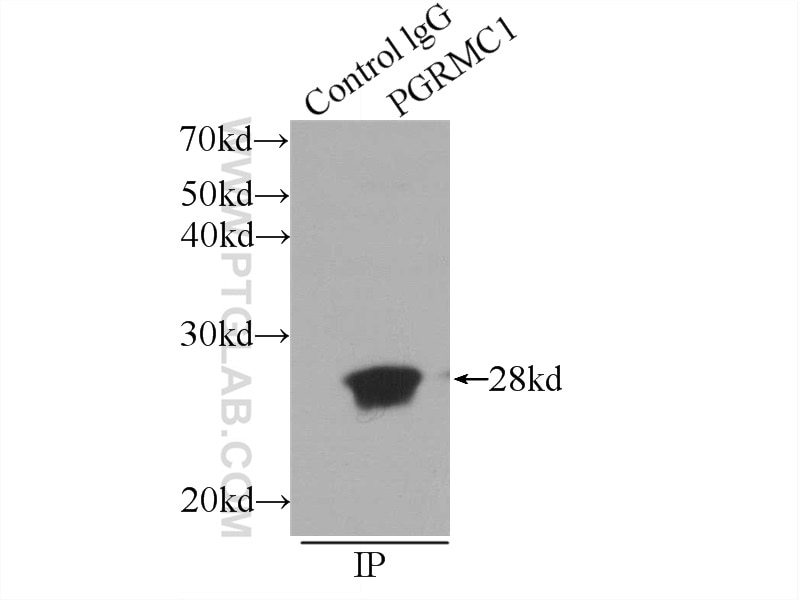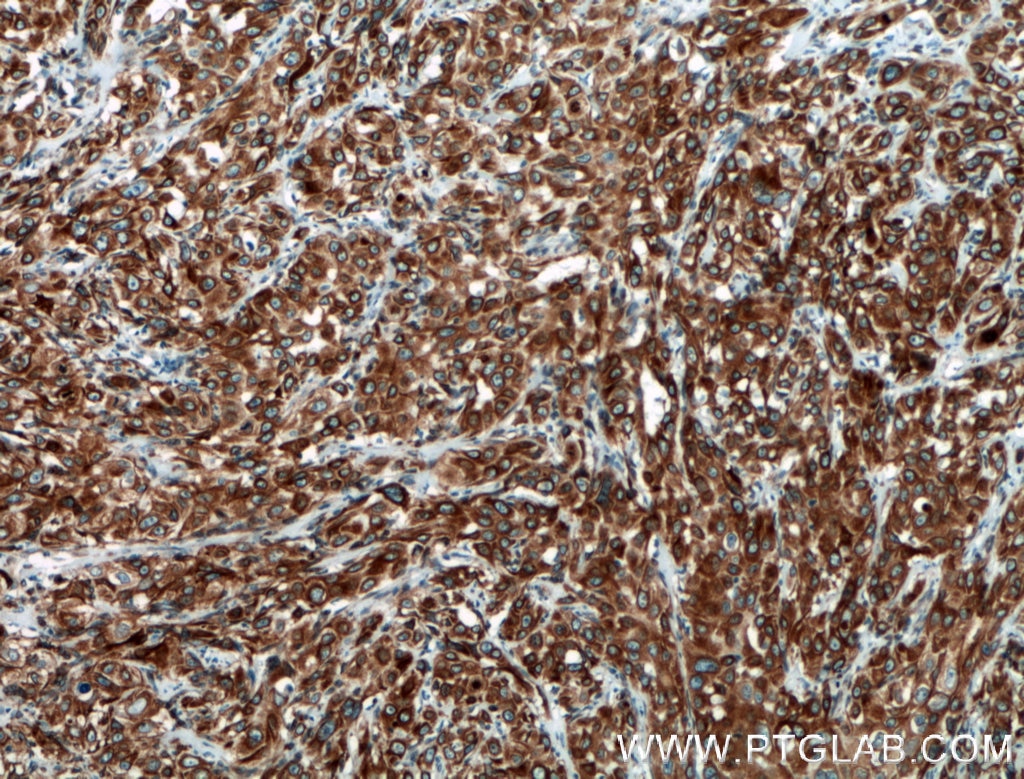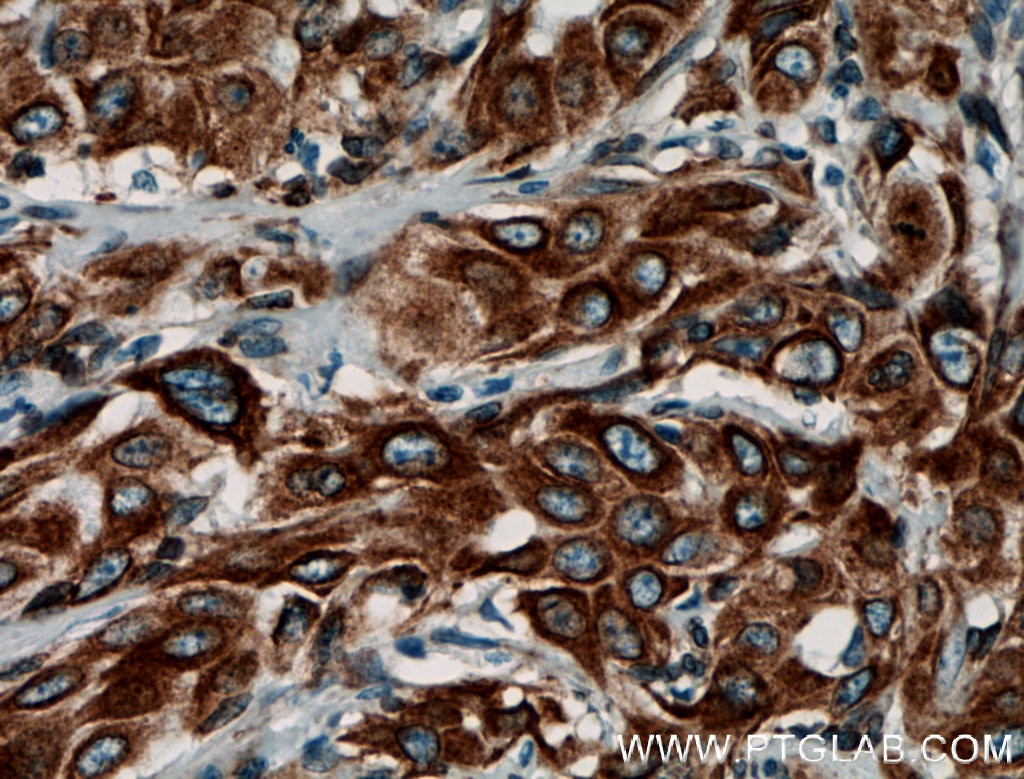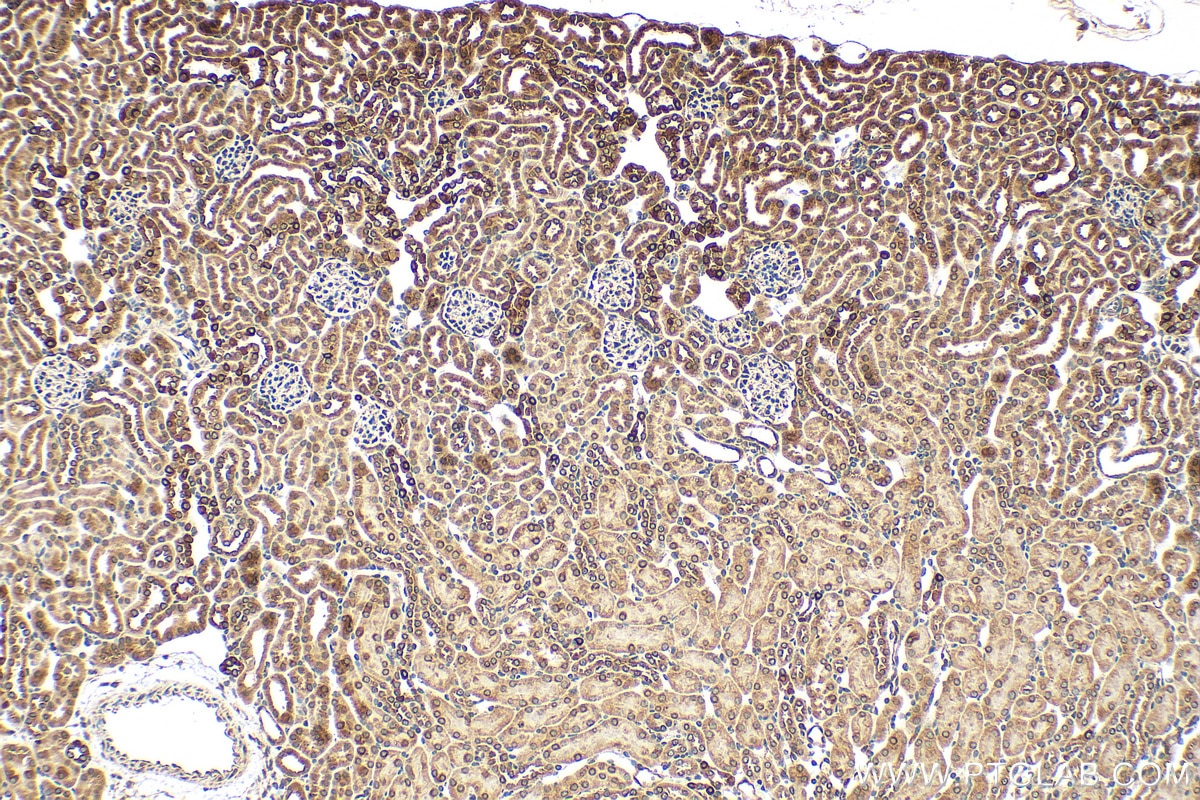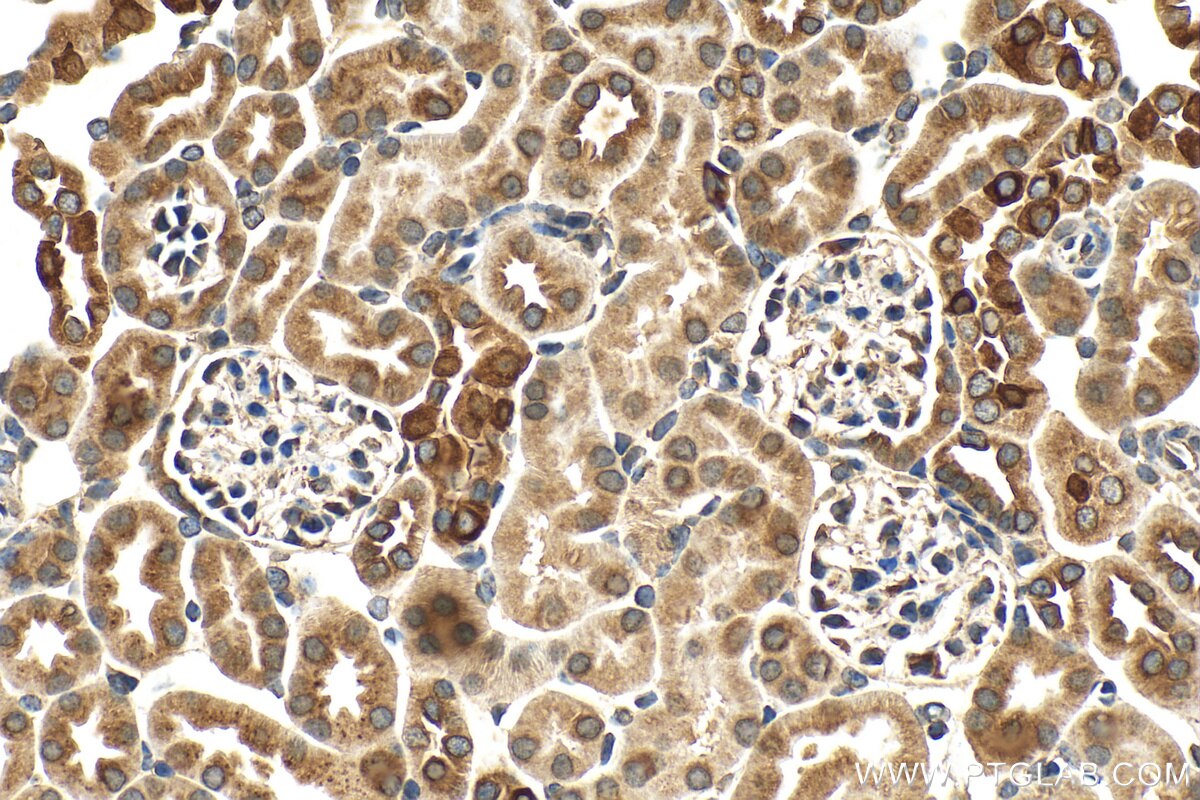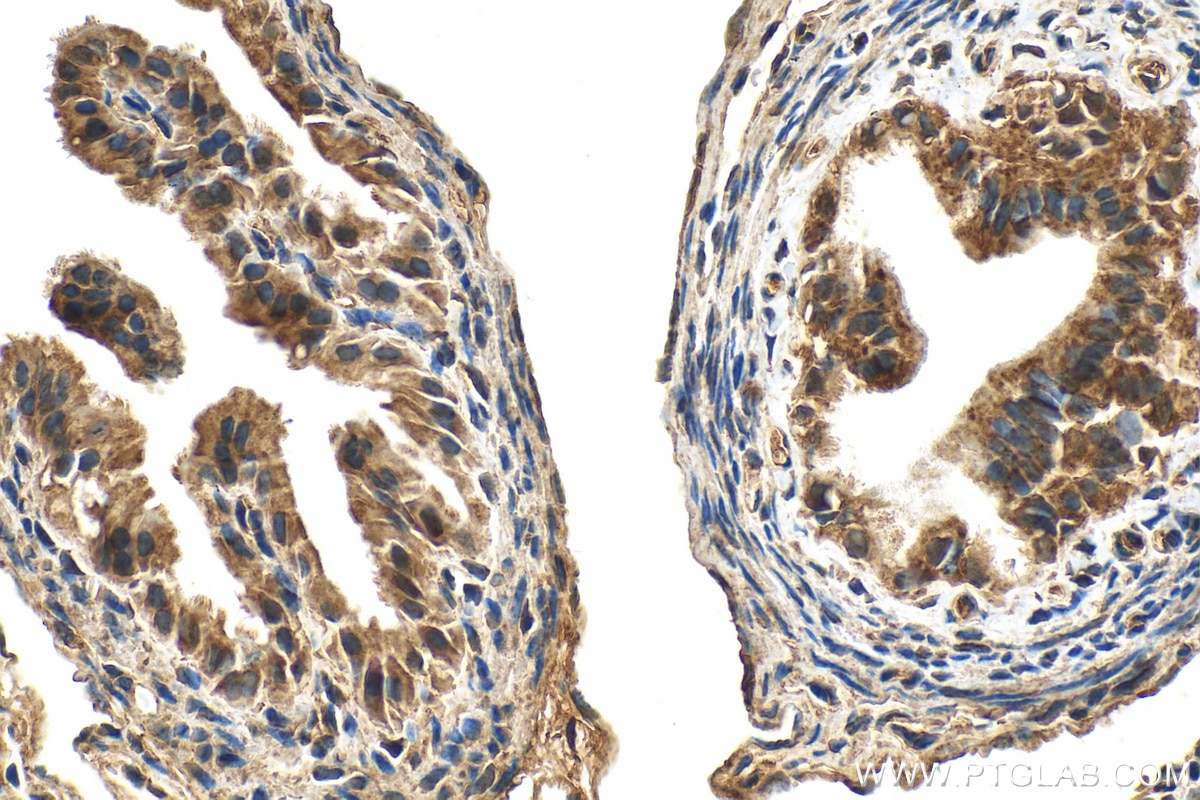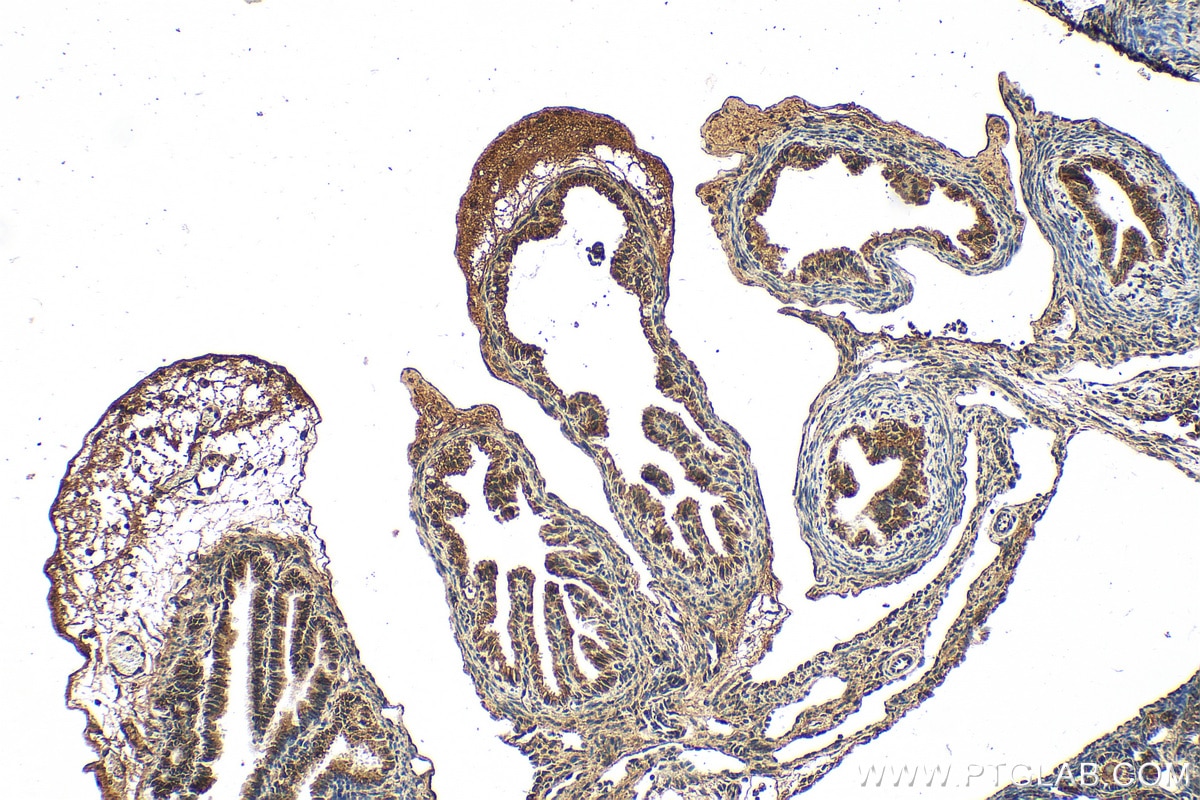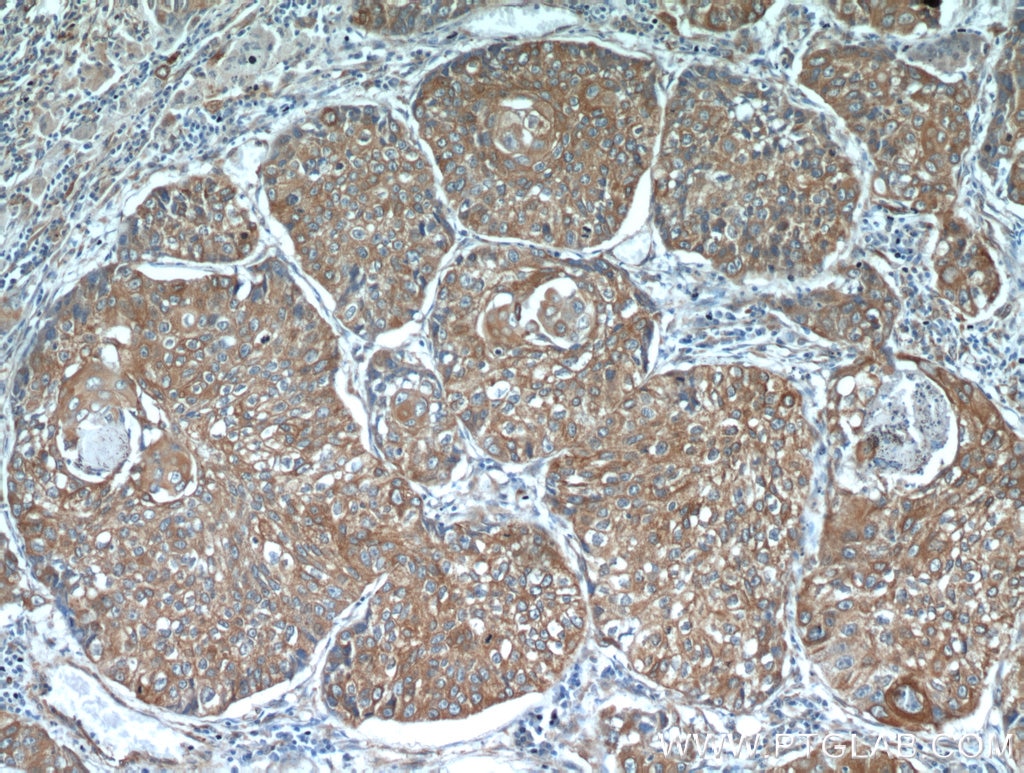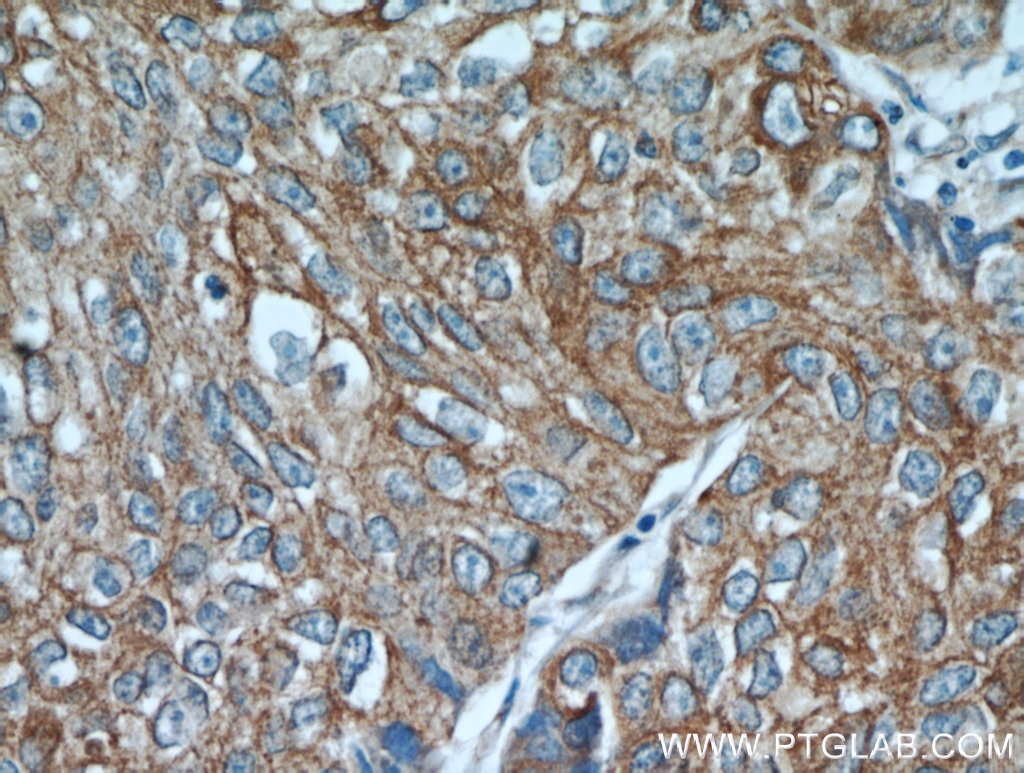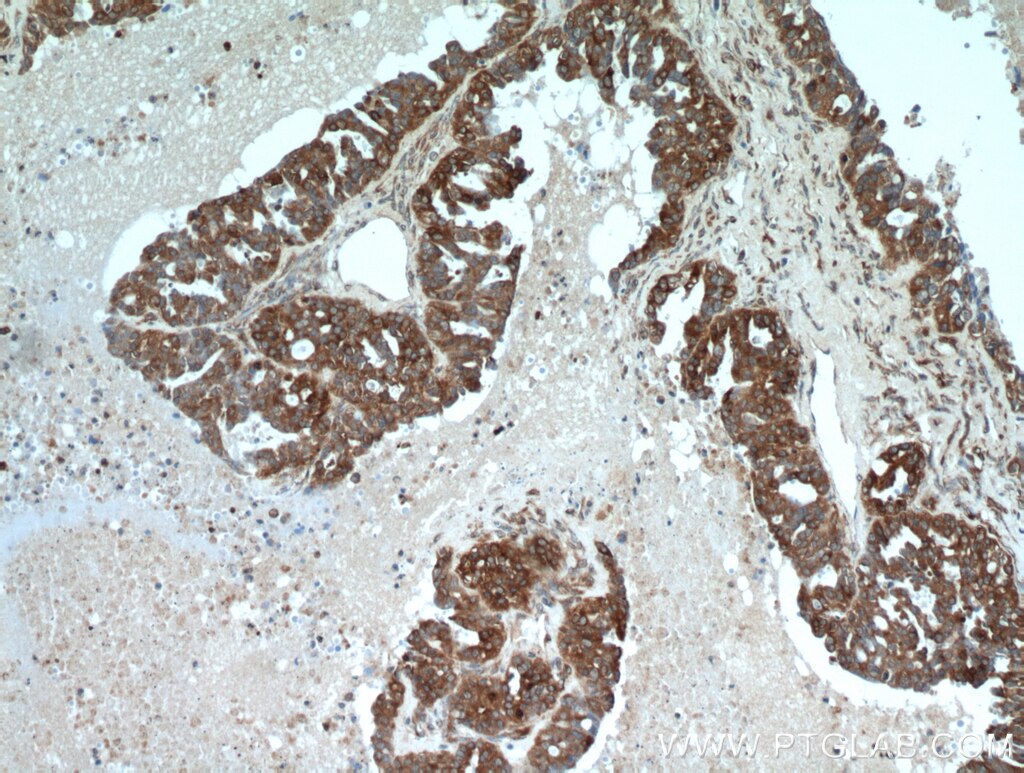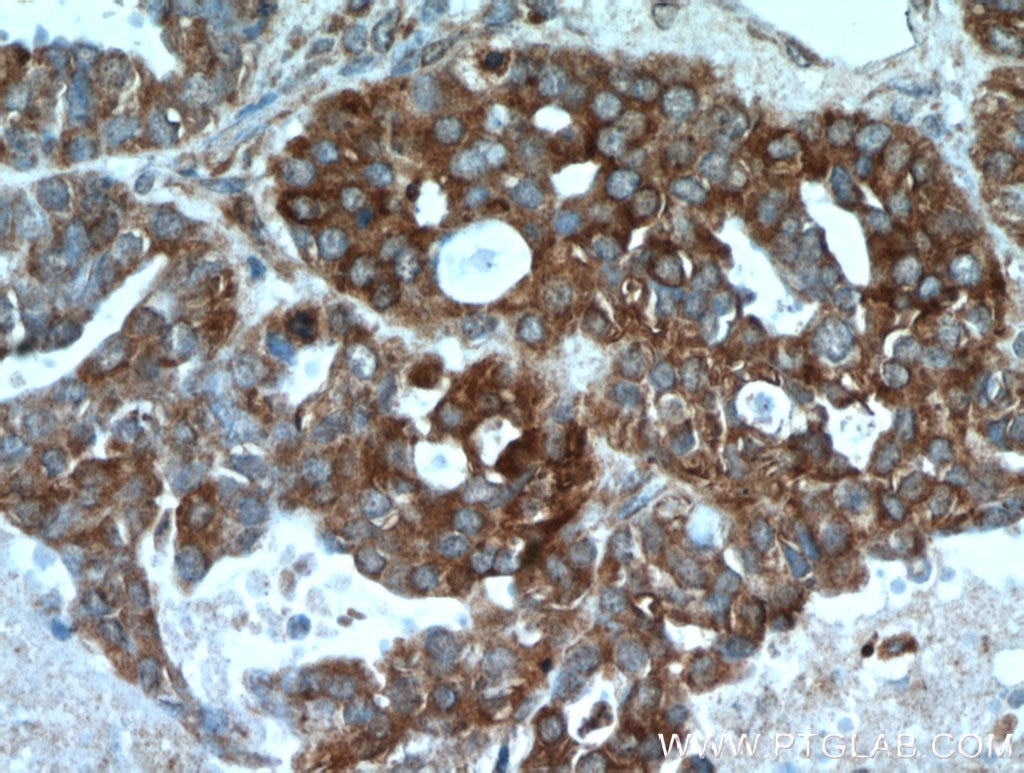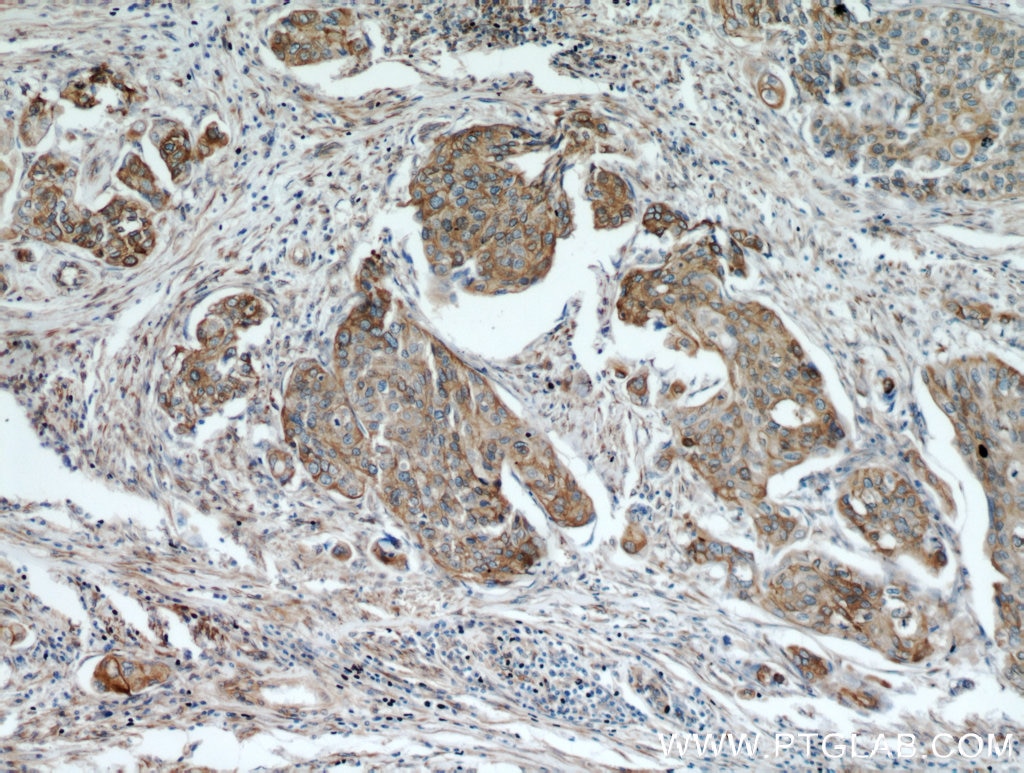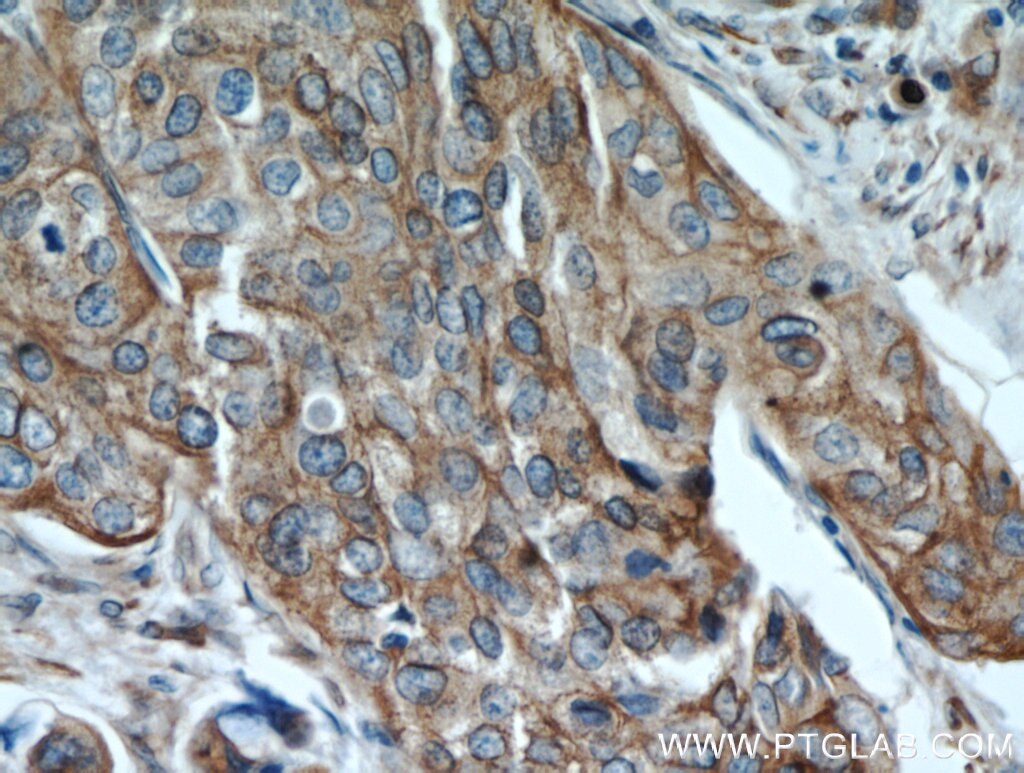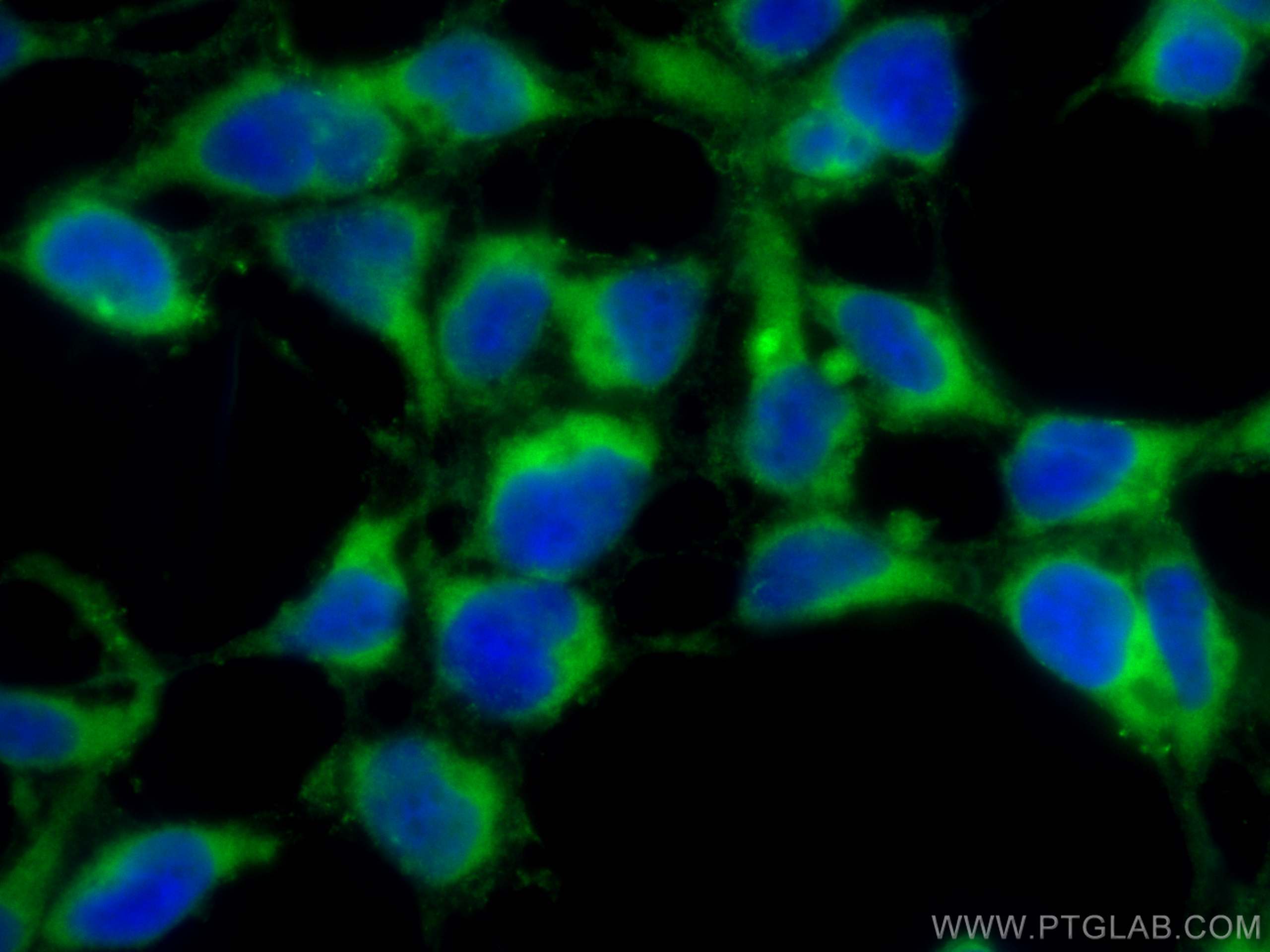- Phare
- Validé par KD/KO
Anticorps Polyclonal de lapin anti-PGRMC1
PGRMC1 Polyclonal Antibody for WB, IHC, IF/ICC, IP, ELISA
Hôte / Isotype
Lapin / IgG
Réactivité testée
Humain, rat, souris et plus (1)
Applications
WB, IHC, IF/ICC, IP, ELISA
Conjugaison
Non conjugué
N° de cat : 12990-1-AP
Synonymes
Galerie de données de validation
Applications testées
| Résultats positifs en WB | cellules HEK-293, cellules HepG2, cellules MCF-7, tissu hépatique de souris, tissu ovarien de souris, tissu rénal de souris |
| Résultats positifs en IP | cellules MCF-7 |
| Résultats positifs en IHC | tissu de cancer du col de l'utérus humain, tissu de cancer du poumon humain, tissu de tumeur ovarienne humain, tissu ovarien de souris, tissu rénal de souris il est suggéré de démasquer l'antigène avec un tampon de TE buffer pH 9.0; (*) À défaut, 'le démasquage de l'antigène peut être 'effectué avec un tampon citrate pH 6,0. |
| Résultats positifs en IF/ICC | cellules HEK-293, |
Dilution recommandée
| Application | Dilution |
|---|---|
| Western Blot (WB) | WB : 1:2000-1:12000 |
| Immunoprécipitation (IP) | IP : 0.5-4.0 ug for 1.0-3.0 mg of total protein lysate |
| Immunohistochimie (IHC) | IHC : 1:50-1:500 |
| Immunofluorescence (IF)/ICC | IF/ICC : 1:200-1:800 |
| It is recommended that this reagent should be titrated in each testing system to obtain optimal results. | |
| Sample-dependent, check data in validation data gallery | |
Applications publiées
| KD/KO | See 7 publications below |
| WB | See 19 publications below |
| IHC | See 4 publications below |
| IF | See 3 publications below |
Informations sur le produit
12990-1-AP cible PGRMC1 dans les applications de WB, IHC, IF/ICC, IP, ELISA et montre une réactivité avec des échantillons Humain, rat, souris
| Réactivité | Humain, rat, souris |
| Réactivité citée | rat, bovin, Humain, souris |
| Hôte / Isotype | Lapin / IgG |
| Clonalité | Polyclonal |
| Type | Anticorps |
| Immunogène | PGRMC1 Protéine recombinante Ag3643 |
| Nom complet | progesterone receptor membrane component 1 |
| Masse moléculaire calculée | 195 aa, 22 kDa |
| Poids moléculaire observé | 22-28 kDa |
| Numéro d’acquisition GenBank | BC034238 |
| Symbole du gène | PGRMC1 |
| Identification du gène (NCBI) | 10857 |
| Conjugaison | Non conjugué |
| Forme | Liquide |
| Méthode de purification | Purification par affinité contre l'antigène |
| Tampon de stockage | PBS with 0.02% sodium azide and 50% glycerol |
| Conditions de stockage | Stocker à -20°C. Stable pendant un an après l'expédition. L'aliquotage n'est pas nécessaire pour le stockage à -20oC Les 20ul contiennent 0,1% de BSA. |
Informations générales
Progesterone receptor membrane component 1 (PGRMC1) is a member of a multi-protein progesterone-binding complex. However, PGRMC1 shares homology with cytochrome b5-related proteins rather than hormone receptors (PMID: 18992768). It is a heme binding protein with biding sites for Src homology (SH2) and SH3 domain-containing proteins (PMID: 17583495). PGRMC1 is overexpressed in a variety of cancers, and thus represents an important biomarker for cancer progression and a potential target for anticancer drugs (PMID: 21730960). In nonmalignant tissues, PGRMC1 is highly expressed in the liver and kidney (PMID: 9705155; 20164297).
Protocole
| Product Specific Protocols | |
|---|---|
| WB protocol for PGRMC1 antibody 12990-1-AP | Download protocol |
| IHC protocol for PGRMC1 antibody 12990-1-AP | Download protocol |
| IF protocol for PGRMC1 antibody 12990-1-AP | Download protocol |
| IP protocol for PGRMC1 antibody 12990-1-AP | Download protocol |
| Standard Protocols | |
|---|---|
| Click here to view our Standard Protocols |
Publications
| Species | Application | Title |
|---|---|---|
EBioMedicine The Sigma-2 Receptor and Progesterone Receptor Membrane Component 1 are Different Binding Sites Derived From Independent Genes.
| ||
Int J Cancer Elevated progesterone receptor membrane component 1/sigma-2 receptor levels in lung tumors and plasma from lung cancer patients. | ||
Transl Psychiatry A potential mechanism underlying atypical antipsychotics-induced lipid disturbances. | ||
Front Pharmacol A Potential Mechanism Underlying the Therapeutic Effects of Progesterone and Allopregnanolone on Ketamine-Induced Cognitive Deficits. | ||
Biol Reprod Hyaluronic Acid Promotes the Expression of Progesterone Receptor Membrane Component 1 via Epigenetic Silencing of miR-139-5p in Granulosa Cells. | ||
J Cell Sci Topology surveillance of the lanosterol demethylase CYP51A1 by Signal Peptide Peptidase |
